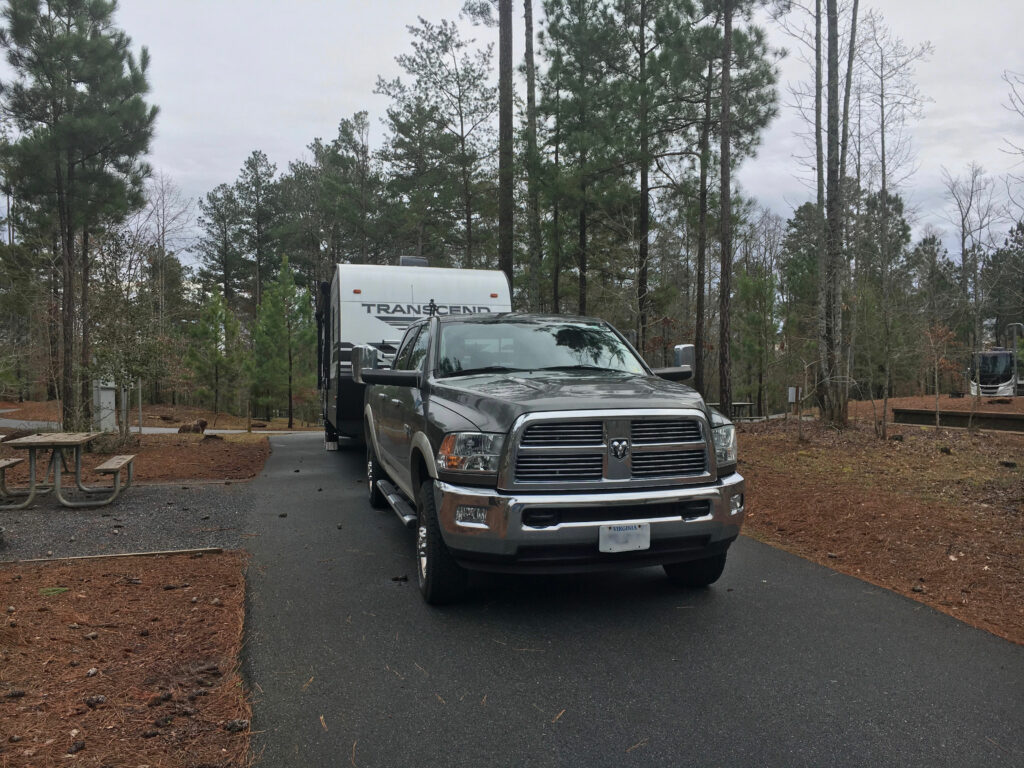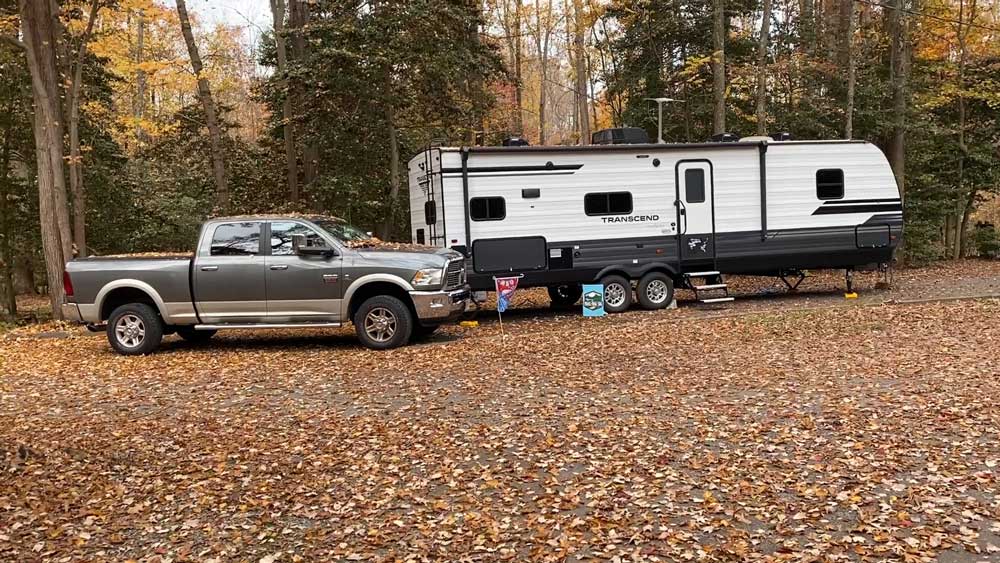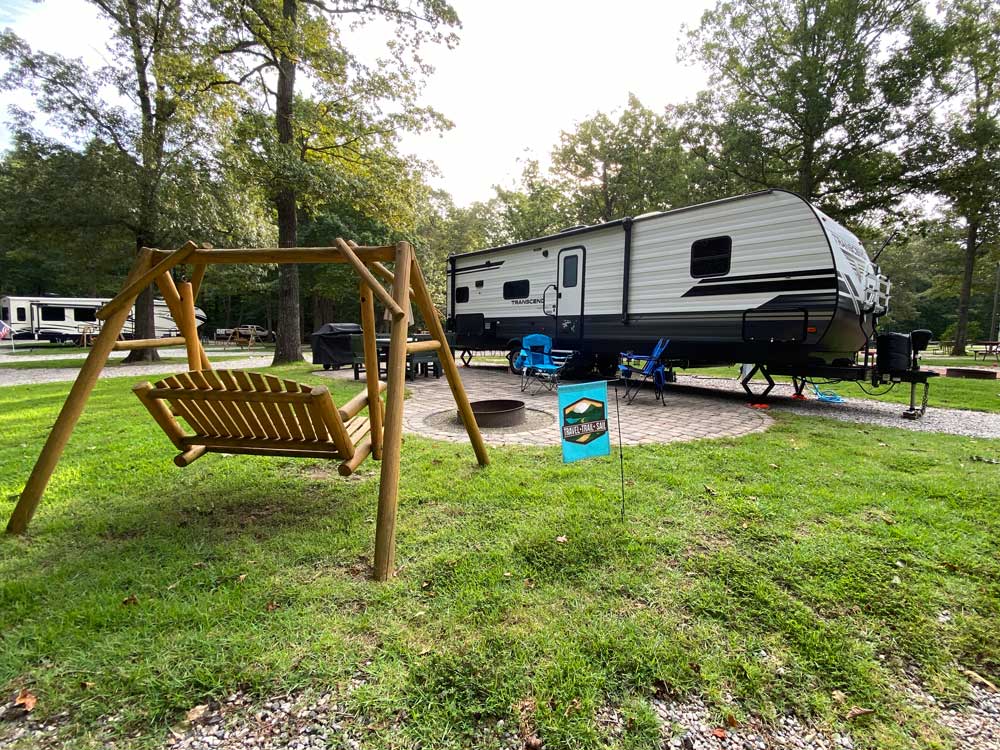9 Steps to Finding A Great RV Campsite
How can you find the best campsite for your next adventure? Our 9 Steps to Finding a Great RV Campsite will help you find and book the perfect site.
RV Campsite Step 1: Determine Where You Are Going
The first step in finding a campground is knowing where you want to go. Take a minute to think about the trip you’d like to take. Are you planning a weekend getaway? Visiting a destination, family, or friends? Or are you heading out on a long, multi-stop trip?
For a weekend getaway, you might just search for campgrounds within a 100 mile radius of your home base. For a multi-stop trip, you need to think about how far you can drive in a day. The answer to that is “it depends”. Many RV travelers like to drive about 200 miles per day. Others go 500 miles or even further.
Once you have an idea of where you are heading, you can start the search for a great campground.
RV Campsite Step 2: Identify What You Want To Do
Now think about the things you’d like to do on your camping trip. Are you planning have all of your fun in the campground or is the campground just a place to sleep while you explore the area?
Many state parks and resort campgrounds have enough to keep you busy without ever leaving. In a state park, you might go hiking or kayaking. There may be a nature center or ranger talks that you would enjoy. Resort campgrounds may offer a water park, putt putt (miniature golf) course, or movie nights. Either way, you’ll have plenty to do.

For a one night stop-over or a exploration home base, you may just want a clean, quiet campground with fewer amenities. For a one night stop, it may be helpful to have a pull-through site so that you can leave easily in the morning. KOA Journey campgrounds are one good option.

Another idea for stop-overs is to check out memberships like Boondockers Welcome or Harvest Hosts where you can find a free or inexpensive place to stay for one night.
Destination exploration camping can be a lot of fun. However, know that if you plan to visit a city, finding a convenient campground may be a challenge as campgrounds are usually located away from the city. For example, when we wanted to go sightseeing in Boston, we had to drive to a T stop and then ride the train into the city. It added an hour each way of travel time to get where we wanted to go.
RV Campsite Step 3: Choose Your Camping Style
Wouldn’t it be great to have it all? Nicely wooded level and private sites with full hookups and 50 amp service. You may need to make tradeoffs. If you like a heavily wooded site with privacy, you may not also get full hookups. If you want full hookups and paved parking pads you likely will be close to your neighbors.

The RV you own may also have a large impact on where you can camp. Some resort style campgrounds will only allow Class A RVs newer than 10 years old. Some park campgrounds only have sites for smaller campers. The nice thing is that there is a wide variety of campgrounds. However, depending on where you are traveling, you may need to adjust to what is available.
RV Campsite Step 4: Set Your Budget
Camping options vary widely in price. You might find a free boondocking campsite while resort campgrounds can charge $150 or more per night. There are plenty of options at different price points.
RV Campsite Step 5: Identify Campgrounds
When you know where you want to be, identify campground options. List state parks, Corps of Engineers (COE) campgrounds, private campgrounds or other camping options in the area. An easy way to find campgrounds in an area is to use the Good Sam campground locater app.
Be sure to consider factors that may impact your choice. For example, for an overnight stop, you may want to have easy access to the highway. In some locations, you may encounter steep or windy roads that may be challenging in an RV.
RV Campsite Step 6: Check Reviews
Once you have a few campgrounds located, be sure to check their reviews. There are several good places to get reviews. One we like to use is Campground Reviews.
People have different ideas about what makes a good campground. Be sure to read their comments. Some may give a campground low reviews for poor Wi-Fi. Others may prioritize clean showers and bathrooms.
Your favorite RV blogger can also be a great source of information. They may have a post or video that has everything you need to know. At Travel Trail Sail, we try to provide helpful information on the campgrounds we visit, which are often in Virginia. Other bloggers focus on different parts of the country.
Here are a few other RV Blogs you might like to check out:
- Georgia and the Southeast: I Love RV Life
- New York and the Northeast: Livin’ Life With Lori
- Texas: RV Texas Y’all
RV Campsite Step 7: Check Campground Availability
RV travel is popular, and campgrounds can fill up quickly. If you need a weekend campsite, you may need to reserve months in advance. Use the relevant campground booking site to see if the campground you want has any available sites.
Some useful campground booking sites are:
- KOA.com
- Reserve America
- Recreation.gov
- The campground web site.
You will need to enter a bit of information including the dates, RV length, if you have slides, and the number of people & pets. If you are using a travel trailer, the length is usually the length of the camper from ball to bumper. You need to measure that as the model number of your camper may not reflect its true length. For example, our 28MKS is actually 34 feet long. Note that for some campgrounds you will need to know the overall length of both the camper and tow vehicle.
Ensure you find a site that is long enough to accommodate your rig. You can sometimes park your tow vehicle next to or at an angle in front of the camper.
Keep in mind, it isn’t only the length of the campsite that matters. In some cases, campgrounds have narrow roads or other reasons for limiting length. For example, there may be an obstacle across from a site that makes backing in with a longer rig challenging.
RV Campsite Step 8: Find Your Specific Site
While some campgrounds are first-come-first-serve, many allow for site specific reservations. Once you have identified that the campground you want has availability, it’s time to find the site you want.
Search for a campground map to identify if there are sites that may work best for you. In reviews, people may have mentioned specific sites that they found best. And, reviewing campsite photos can be very helpful. Just know that the photos you find may be several years old.
RV Campsite Step 9: Book Your Site
Once you find the perfect site, book it. Don’t wait. Sites fill up fast. You can cancel later if you need to. If you do need to cancel, you will lose the reservation fee and possibly a deposit.
If you reserve online, you may pay a non-refundable booking fee. It’s often $5. You can often avoid the fee by calling to make a reservation. Note that if your plans change, you can often adjust the date of the reservation to another time. However, if you do need to cancel, you may also lose some of the money you paid. Always check to ensure you understand the terms of the reservation.
Example: Booking Westmoreland State Park
We recently stayed at Westmoreland State Park. Using that as an example, I’ll share how the process works.
We were looking for a weekend getaway. While we like to stay at all types of campgrounds, in this case we wanted to do some hiking. State park campgrounds provide a great place for hiking and outdoor adventure, so we opted to focus on them.
We wanted to stay within about 100 miles. Westmoreland is 108 miles from our home base so that made it a great choice. Pocahontas State Park was also another good option. However, there was a notice posted that for the weekend we wanted to visit, Pocahontas was partially closed for hunting.
State park campgrounds tend to be relatively inexpensive. For our weekend getaway, Westmoreland was $115 for three nights, including all taxes and fees.
While we had stayed at Westmoreland before, it had been a few years. We reviewed our notes from our past stay and checked a few reviews for anything that may have changed.
To find our site, we checked the Westmoreland State Park campground website, campground map, a Virginia State Parks Westmoreland Flickr page, Campsite Photos Westmoreland photos, and the information on the Reserve America Westmoreland page. While most of the sites were meant for smaller campers, we did find one available site that would accommodate our camper.

Our visit to Westmoreland was a lot of fun. You can check out our Westmoreland State Park Review post and Westmoreland State Park YouTube video for details.
Summary: 9 Steps to Finding A Great RV Campsite
We hope this information helps you in finding great places to camp. I’m sure that you have other useful tips & tricks to finding a great RV campsite. If so, we’d love to hear them. Please leave a comment to share your thoughts. Thanks.
Copyright 2021 Travel Trail Sail. All Rights Reserved.

